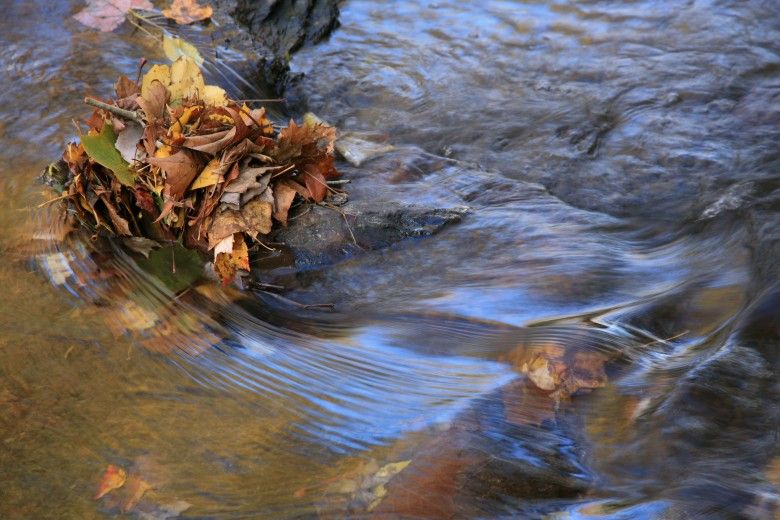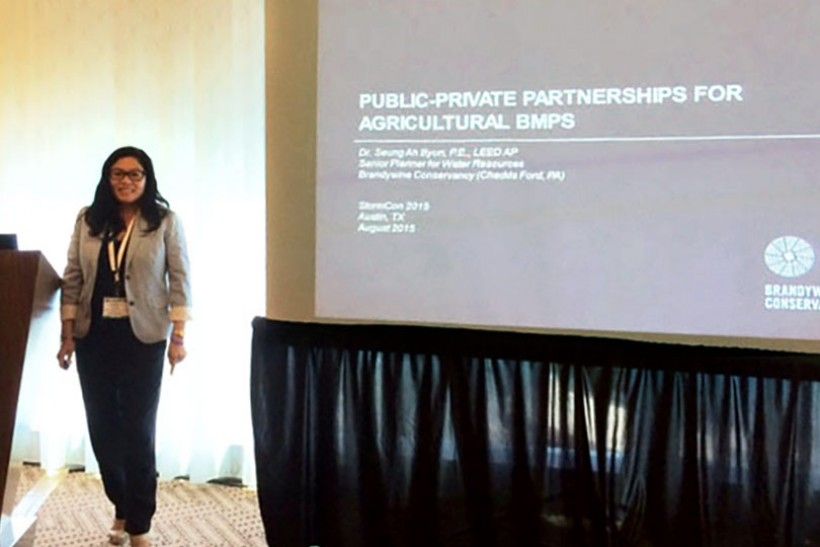Brandywine Conservancy Appears at StormCon to Tell of Our Adventures Protecting Source Water

Last month, I visited Austin, Texas for StormCon, a conference of stormwater professionals from across North America. While we did not don superhero gear, thousands of water resource champions gathered to discuss their experiences and accomplishments aimed at protecting and restoring water quality. Conference presentations covered topics on Green Infrastructure, Stormwater Program Management, and BMP (Best Management Practices) Case Studies. Exhibitors ranged from equipment manufacturers and designers, to consultants, and federal, state, and local agencies.
Stormwater BMP’s in Pennsylvania for Drinking Water in Delaware
As a speaker, I presented the Brandywine Conservancy’s work to protect and restore surface water quality throughout the Brandywine-Christina Watershed for source water protection. I discussed our land and water conservation efforts in Honey Brook Township, the location of Wilmington’s water supply headwaters. The Conservancy’s legacy of work in municipal planning, land acquisition, and conservation planning - for open space and farmland in Honey Brook - has helped to preserve 3,155 acres, nearly 20% of the Township.
Another Public-Private Partnership for Ag BMPs

The Godfather of Stormwater Modeling
As an attendee, I had the exciting opportunity to attend presentations by several other stormwater professionals. Roger Glick, known as the “godfather of stormwater modeling” spoke about assessing the impacts of stormwater controls for the City of Austin. The EPA Region 6 Administrator and MS4 Program Coordinator both expanded the perspective to the South Central U.S. A representative from the Center for Watershed Protection (MD) described the Clean Water Optimization Tool to help Maryland communities meeting Chesapeake Bay pollution reduction requirements. From other speakers, I learned innovative ideas in operation and maintenance, asset management, and other practices and strategies for stormwater management and protecting surface water quality.
A Philadelphia Eagles Fan in Cowboy Country: Bats, BBQ, and Beer
After the presentations were over, I braved the 100 degree heat to explore the City of Austin. I made sure to take some time to check out the Statesman Bats, eat lots of Texas BBQ, and taste Austin’s local brews. Austin has the largest urban bat colony in North America, so the bats were a must-see. Water quality brought me to Austin and I left with a taste of the City and plenty of its food in my belly.

